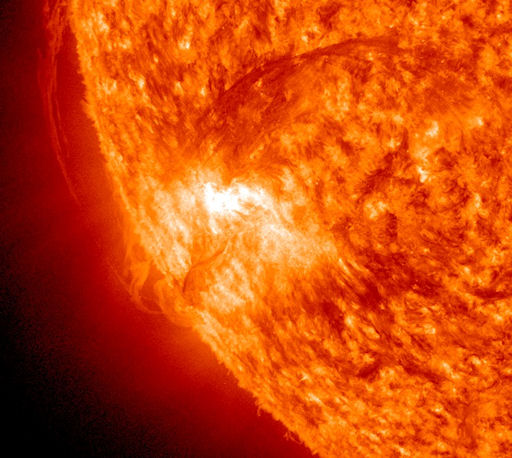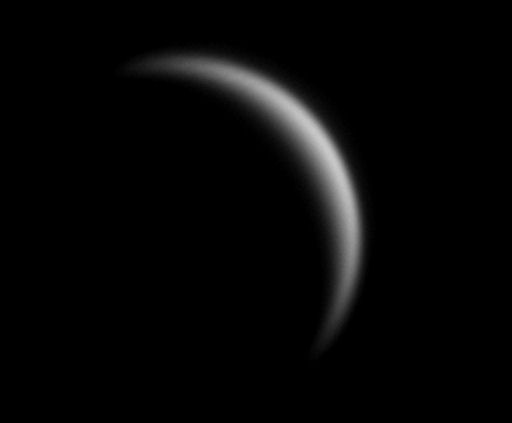AURORA ALERTS: Did you miss the Northern Lights? Next time get a wake-up call from Space Weather PHONE | | |
SPACE PLANE GOES MISSING: The US Air Force's X-37B space plane has gone missing. Amateur satellite watchers who routinely monitor the secret mini-shuttle failed to sight it at expected times on Oct. 7th and 9th. It's possible that the X-37B has landed. More likely, the space plane has maneuvered into a new orbit and will be recovered again in the nights ahead. Stay tuned for updates.
ACTIVE REGION 1112: Emerging sunspot 1112 is connected to a vast network of dark magnetic filaments looping around the sun's southeastern limb. NASA's Solar Dynamics Observatory took this picture of the region just hours ago:

Filaments such as these have a habit of erupting. Will the fact that they are rooted in a sunspot make them more--or less--stable? No one knows. The magnetohydrodynamics of sunspots is so complex, not even the most powerful supercomputers on Earth can predict when they will erupt. Readers with solar telescopes are encouraged to monitor this region for unexpected developments.
more images: from Ingmar Glass of Bavaria, Germany; from Cai-Uso Wohler of Bispingen, Germany; from Larry Alvarez of Flower Mound, Texas
CRESCENT PLANET: Venus is moving between Earth and the sun and, in the process, turning its night side toward us. From the terrestrial point of view, only a sliver of Venus remains illuminated. Dennis Put sends this picture of the crescent planet from Brielle, The Netherlands:

"Even modest equipment will allow Venus to be viewed as a crescent disk," says Put. "This image was taken in infrared light using a a 9-inch Celestroon telescope and a DMK21 camera."
The trick is finding Venus. Because the planet is so close to the sun, it hangs very close to the western horizon after sunset. Any low trees or buildings will block the view. One possibility: look before sunset. Venus is actually bright enough to be seen in blue sky. Sky & Telescope makes the following recommendation: "The time to view Venus is in daylight long before sunset — but don't accidentally sweep up the sun! In mid-afternoon, place your scope in the shadow of a building or other obstacle where you have a clear view of the sky 28° to 21° to the sun's left." Observing from inside a shadow means the sun will be safely hidden while you scan the suggested region of sky for Venus. Try it!
more images: from Mariusz Rudziński of Mirostowice Dolne, Poland; from Stephen Williams of Chabot Space and Science Center, Oakland, California;
Sept. 2010 Northern Lights Gallery
[previous Septembers: 2009, 2008, 2007, 2006, 2005, 2004, 2002, 2001, 2000]
Potentially Hazardous Asteroids (
PHAs) are space rocks larger than approximately 100m that can come closer to Earth than 0.05 AU. None of the known PHAs is on a collision course with our planet, although astronomers are finding
new ones all the time.
On October 10, 2010 there were 1149 potentially hazardous asteroids.
Notes: LD means "Lunar Distance." 1 LD = 384,401 km, the distance between Earth and the Moon. 1 LD also equals 0.00256 AU. MAG is the visual magnitude of the asteroid on the date of closest approach. | | The official U.S. government space weather bureau |
| | The first place to look for information about sundogs, pillars, rainbows and related phenomena. |
| | Researchers call it a "Hubble for the sun." SDO is the most advanced solar observatory ever. |
| | 3D views of the sun from NASA's Solar and Terrestrial Relations Observatory |
| | Realtime and archival images of the Sun from SOHO. |
| | from the NOAA Space Environment Center |
| | the underlying science of space weather |

